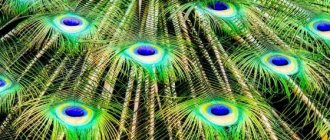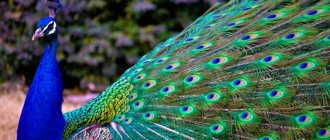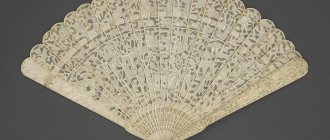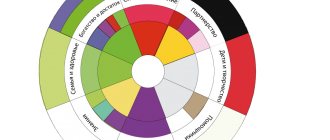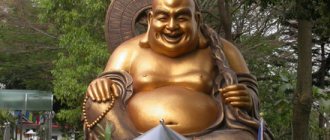Peacock
Feng Shui peacocks are one of the most powerful talismans. They bring happiness and joy, promote success in work and career growth. The peacock is also a symbol of pride, immortality and beauty, thanks to its proud gait and the beautiful characteristic coloring of its tail, and the large number of “eyes” on its tail is associated with wisdom. It is with its unique tail that the peacock protects and also attracts all kinds of honors to the head of the house.
In Feng Shui, you can use not only figurines and images of a peacock as a talisman, but also its feathers, which are a symbol of potential.
The Legend of the Peacock
In China, an ancient legend says that in ancient times, the Yellow Ancestor met a beautiful bird on the shore of a lake. Its plumage shimmered with different colors of the rainbow. The sage tried to speak to her, but she did not pay attention to him, since her gaze was riveted on her own reflection in the water of the lake. Yellow Ancestor became angry at her discourtesy and covered the sun with his palm. As soon as it got dark, the bird turned to the sage and he began to ask her about everything that was pleasant and interesting to her. The peacock (that was the name of the bird) spoke proudly and verbosely about his desire to do good and about his own generosity. But as soon as the sun came out, Peacock instantly forgot his pompous words and began to admire his reflection in the lake again. Then the Yellow Ancestor became angry and punished the peacock. Now this bird is obliged to do good and be responsible for its words until the end of time
Positive signs about peacock feathers as decor in the apartment
Since Asia is the homeland of peacocks, first of all, you should find out why this bird is so respected in this part of the world and what benefits its feathers and decorative elements with its image can bring to a person.
Eastern peoples have many legends associated with this representative of the fauna. So, for example, in India there is a legend that the golden peacock was the prototype of the great Buddha before his birth. Also, followers of the Buddhist religion claimed that these birds were conductors of the souls of the dead to heaven.
Asians believe that those who acquire such feathers in their home will be able to attract the following benefits:
- wealth,
- peace of mind and tranquility,
- luck.
With the help of such a decorative element, you can not only decorate your home, but also protect it from attacks from dark forces. It is believed that this item can protect against any type of evil eye.
As mentioned above, the teachings of Feng Shui insist that such a talisman must be in every home. The greatest benefit will be brought by a golden figurine in the shape of this bird, inlaid with precious stones. Of course, not everyone will be able to purchase this item, so you can make it yourself.
By the way, images of this representative of the fauna and its feathers can be found on various household items (fans, vases, items of clothing, tablecloths, etc.). Such drawings can have completely different designs, but there is one common feature - a riot of colors.
What material should the peacock be made of?
White peacock
In Feng Shui, peacock talismans can be made from a variety of materials: metal, including precious metal, inlaid with precious stones, paper, clay, plasticine, glass, crystal. Also, Feng Shui symbols include any of its images: paintings, embroidery, etc. The main thing when depicting or making a peacock is not to spare paints for coloring its tail so that it shimmers with different colors of the rainbow.
Speaking about the colors of the peacock and the brightness of the colors of its tail, as an exception, it is worth noting the white peacock. Feng Shui and the White Peacock are an ideal combination, since the White Peacock is a symbol of spirituality, achieving spiritual harmony, well-being, and prosperity in life.
What does a picture of peacocks mean according to Feng Shui?
The image of a peacock in the painting is the same Feng Shui talisman as a peacock made from any other material.
Paintings depicting a peacock greatly activate the energy of fame, success and prosperity.
Where to put a peacock in Feng Shui
Like any talisman, a peacock figurine can activate certain areas in the house. To get the most benefit from it, place the talisman in the following places:
- Northeast . This is the sector responsible for knowledge and development. The peacock is considered a bird endowed with special, hidden wisdom - it’s not for nothing that there are so many “eyes” on its tail;
- South . In the sector of fame and fortune, the peacock will help you achieve respect and gain a good reputation.
- Southwest . This bird is considered a symbol of beauty. In the sector responsible for love and romance, it will be very useful.
- Southeast . The peacock attracts streams of positive energy that can activate the wealth sector.
- North . The career zone will benefit if you place a talisman in it that represents wisdom and luck.
Paired figurines or compositions that depict two birds at once will bring happiness to the marital union, so they can be placed in the bedroom. If you are still single, but really want to find a soulmate, then peacocks will help you attract love into your life.
- Like other talismans, do not place the peacock on the window with its head facing the street - it will not be of any use, since it does not protect against the evil eye, and cannot bring good luck to the house to which its back is turned.
Attitude to the talisman
The main thing is that you should not forget about the Feng Shui peacock talisman and take care of it regularly. Only those who follow exactly all the tips for caring for and activating this talisman can truly achieve great success.
Activation and strengthening of the talisman's action
- Peacock placement
To enhance the effect of Peacock, fire is needed. You can light a candle next to the talisman or place the peacock on the mantelpiece 1-2 times a week (if the peacock is made of wax or plasticine, it can be activated by placing it in the room where the fireplace is burning).
- You can also activate the Peacock talisman by offering him a “treat.” You can treat the peacock with nuts, seeds or cereals by pouring them into a saucer and placing it in front of the figurine.
- You need to stroke the bird figurine often, talk to it, and admire its beauty. This beautiful bird loves affection and praise very much, and in gratitude to you, he will do everything to ensure that you are happy and prosperous and reach the top of your career.
Where to place the peacock talisman according to Feng Shui
According to Feng Shui, the placement of a peacock in your home will depend on what you want to achieve from this talisman.
If you want a promotion in your career or need to solve problems in business, place the peacock in the northern part of the house. To enhance the effect of the talisman, it is best to choose a peacock with a tail for this sector, which will mostly contain the colors of this sector (blue, light blue, black).
If you want to feel the taste of fame or earn an excellent reputation, place a figurine or hang an image of a peacock in the southern direction. To enhance the talisman, “fiery” colors (red and all its shades) and the presence of fire (fireplace, aroma lamps, candles (ideally red)) are suitable.
Peacocks are also famous for their fidelity to their partner. They are monogamous. Therefore, in the love zone (in the southwest), by the way, they will be those who want to improve the situation on the love front. Improve relationships with your spouse, strengthen your marriage.
pair of peacocks
But in the zone of children and creativity (in the west), it is better not to place a peacock, as this can cause excessive pride in their achievements in the child or head of the family.
Colors, varieties and materials
Metal, ceramics, glass, crystal, wood, and anything can serve as material for a luxurious peacock that you are going to place in your home. A golden figurine inlaid with precious stones or a hand-made panel depicting a bright bird will be equally useful for its owner.
In this matter, the main thing is the color, the brighter it is, the better, the stronger your symbol will be. If you make it yourself, then choose only bright, rich colors. But, as with almost any rule, there are exceptions in this case too. In the Taoist teachings of Feng Shui, the white peacock is considered a symbol of Tao - ideal harmony. If you strive to achieve peace of mind, peace and concentration according to Feng Shui, then your choice is the white peacock.
Why you shouldn't keep peacock feathers at home
In contrast to all of the above, let’s look at why the peoples of Europe are so afraid of this decorative element.
Such a negative attitude towards decoration is directly related to the attitude towards this bird in this part of the world. Europeans associate such character traits as arrogance and selfishness with the peacock. Consequently, people believe that whoever acquires his feathers runs the risk of developing these qualities in himself. There is another belief associated with peacock feathers. It is believed that if an unmarried girl acquires such an accessory, she risks remaining alone forever. This sign has come down to this day from the ancient population of Europe.
People believed that “thanks to” such an item, the fair sex became overly proud, which undoubtedly scared off suitors.
This opinion was popular among representatives of the lower classes. But representatives of the upper classes of society, on the contrary, were happy to acquire similar decorative elements for themselves and decorate their hats with their help.
Many people know that people involved in the theater have their own superstitions that can predict the failure of a performance. One such bad omen is the feathers of this bird, accidentally or intentionally left on the stage.
From the ancient Arabs to the present day, a legend has come down that says that it was the peacock who opened the gates of paradise to the tempter snake. If you pay attention to the design of the feather, it resembles an eye. Many people believe that such an image is a reflection of the devil's eye.
Another belief says that anyone who acquires the gifts of this representative of the fauna at home can incur terrible illnesses or even death on himself and his family. Perhaps the sign is due to the fact that only high priests were allowed to have such feathers, who used them to communicate with spirits. It was believed that if an unenlightened person touched this attribute, he would incur the wrath of the gods.
However, even the most ardent opponents of this decorative element allow its presence in the house if a person accidentally ends up with it. For example, if it flew into your home with the help of the wind. In this case, the peacock’s gift can bring positive changes to the life of its owner.
Rules for use and wearing
The peacock amulet can only be used with good intentions. Any item with symbols is kept clean and treated with care and respect.
Activation and amplification
To activate the power, you will need to charge it with the fire element. If the house has a fireplace or stove, the figurine is placed next to it so that it looks at the flame. An ordinary candle next to the amulet will have an equivalent effect.
At the moment of interaction between the symbol and fire, you should turn to the peacock and start talking to it, express your reverence and respect, and praise its purity and beauty.
You need to say your desires out loud, and it is important to be in a good mood. This way the talisman will acquire special magical power, which will be directed at one person or family.
A bowl of food is placed near the figurine or image. These can be seeds, grains, nuts, cereals. The ritual is repeated periodically.
Poultry house arrangement
A barn for keeping peacocks is usually built on the north side. The height of the poultry house ceiling is about three meters, with a length and width of two and a half meters. The poultry house must communicate with the aviary using special manholes equipped with a removable door. If necessary, the entrance is blocked. In the barn it is necessary to place several perches, as well as nests.
For peacocks, nests are made quite voluminous - up to 75 cm deep, width and height from 50 to 65 cm.
Usually, boxes or baskets are used to arrange a nest, which are lined with straw and large sawdust from the inside.
The barn must have good ventilation, lighting and heating. During cold weather, birds need a comfortable temperature and dry, fresh air. They do not tolerate dampness and drafts well. For a comfortable stay, peacocks need a temperature of +18 + 20 degrees with a humidity of about 60%. Lower air humidity makes birds constantly thirsty and leads to digestive problems, while higher humidity threatens colds and problems with plumage. Even in frosty winters, many breeders recommend letting birds out for walks during the daytime. They can easily tolerate frosts down to -25 degrees, however, for birds that regularly walk in winter, chopped lard and minced meat will be a necessary supplement to their diet.
Who will the peacock help?
A proud bird will help prevent danger and betrayal, and cope with the difficulties that stand in the way. According to some reports, the talisman is able to open the gift of hypnosis and help its owner influence other people.
The peacock will show business owners the path to fame and wealth and help attract good partners.
But it’s not only fame and fortune that the peacock can attract. Due to its beauty and devotion, the bird is considered a symbol of eternal love.
Types of magical talismans
A person can choose an attribute in the form of a pendant.
Depending on your goals, it is recommended to pay attention to birds with their tails down or up. The former attract luck, help bring plans to life, but provoke pride. The plumage creeping along the ground gives the owner wisdom, protects against mistakes and warns of future difficulties. The amulet is especially useful for people who often face stressful situations. Practitioners recommend making or purchasing the following magical talismans in the form of a bird:
- figurines;
- pendants;
- keychains;
- paintings;
- embroidery;
- crafts made from clay or plasticine;
- fan;
- feathers.
For beauty or food?
Breeding peacocks is still considered an exotic activity in our country. Therefore, the price of animal products obtained from such farms is high. Now an adult costs between 15-20 thousand rubles. The price for a one-year-old bird is about 4 thousand. A hatching egg can be sold for 100-500 rubles.
Peacocks can be bred for exotic purposes, so that firebirds can live in the homestead. But aesthetic pleasure can be combined with financial pleasure by selling adult peacocks, young animals, and eggs.
Only males have the beautiful peacock tail, which is actually an uppertail. Female peahens have more modest plumage. And the large feathers from the peacock’s tail will fall off on their own in the fall, when the male bird molts. So humane poultry keepers do not need to slaughter birds for the sake of beautiful feathers.
In the distant past, peacock carcasses were supplied only to the tables of the nobility. Gourmet dishes were prepared from the meat of these birds. But gradually in Europe, peacocks were replaced by turkey. Therefore, they began to be kept mainly for beauty, and not for food.
Peacock meat is still considered a delicacy today. It is more dietary than turkey, as it contains less fat. The meat of young birds is most valued.
Initially, it is better to purchase peacocks from reliable specialized farms in your area in order to buy healthy individuals adapted to the conditions of a particular region.
Peacocks can be bred for exotic purposes so that firebirds can live in the homestead
What does this talisman mean?
The peacock symbol is found in different cultures and has a different definition:
- Islam is associated with clairvoyance.
- Christianity is considered a symbol of divine reverence and is often part of Christmas icons.
- Buddhism - symbolizes vigilance and compassion.
The peacock amulet has many meanings, the most popular of which are:
- longevity or immortality;
- spiritual and physical harmony;
- harmonious relationships with loved ones and lovers;
- success, integrity and glory.
The peacock talisman helps to attract joy and good luck into the home, and makes the owner wiser and more successful. This amulet will help:
- protect from betrayal;
- develop intuition;
- protect from accidents;
- normalize mental state;
- overcome difficulties without much effort and achieve success in new endeavors;
- representatives of the fairer sex will soon receive a marriage proposal from a wealthy man;
- gain recognition in what you love;
- improve your financial situation.
A peacock with a loose tail will help a person gain self-confidence, as well as feel harmony between physical and spiritual states. The image of a bird with a folded tail is an excellent protection against committing rash acts.
Getting offspring
The average lifespan of peacocks in captivity is 20 years, and they reach sexual maturity at 2 years. This is easy to determine from the male. It grows long, beautiful feathers on its tail. By this time he becomes more active. You can watch his interesting dances, this is how the male attracts the female.
The peahen itself is an excellent mother. She incubates the eggs and then raises her chicks. Females begin to lay eggs in April. If you do not take the eggs, the peahen may sit on the nest. If the owner decides to place the eggs in an incubator, then 2-3 eggs should be left in the nest so that the females continue to lay eggs here.
Nests are organized in a dry, warm poultry house. During one season, a female can lay up to 30 eggs.
When the babies hatch, at a week old they can already be released for short walks, but only if the weather is warm and dry. Under such conditions, from this age they gradually begin to increase the duration of the young animals’ stay in the fresh air. Small peacock chicks at this age are similar to chickens, but larger in size.
In order for the eggs to hatch, one male is needed for every 4-5 females. The poultry house where such families are kept must be spacious. One individual needs a minimum of 2.5 m² of space.
If you don't take the eggs, the peahen may sit on the nest
Feeding the chicks
In the first week of life, chicks must be given crushed, hard-boiled chicken eggs. From the second week, crushed greens are gradually added - dandelions, nettles, clover, alfalfa. Adding minced meat to the daily menu will have a positive effect on development and growth.
You can put a mixture of curdled milk and mixed feed in a separate feeder (it is better to use compound feed for pheasant chicks or chickens).
When the chicks turn one month old, they are gradually transferred to mash, which is made from mixed feed, curdled milk, sprouted or ground grain, and herbs. At the age of two months, you can add finely chopped vegetables and fruits and gradually transfer the young animals to an adult diet.
Symbol of countries and cities
National bird of India
The blue peacock was officially elected as the national bird of India in 1963. The choice was between him and the bustard. The association of the royal bird with Indian culture has an ancient history. Birds were deified by the ancient Hindus, as evidenced by the myths that have reached us.
The peacock has been involved in the life of a Hindu since childhood - he is the hero of fairy tales and legends, songs and poems.
Birds live near cities and settlements, therefore they are in interaction and close connection with the local population.
The greatness and beauty of this feathered representative of the fauna is combined with an unpretentious disposition, which is why it is rightfully called the national bird of India.
Other countries and cities
The green peacock has been the national symbol of Myanmar since 1940. The culture of the country was greatly influenced by the royal nobility of India, so the similarity of the symbols of the states is natural.
In the ancient Egyptian Heliopsis there was a temple of the sun, so a representative of the pheasant family, as a sign of the luminary, became a symbol of this city.
The symbol of the peacock or its feather is widely represented in heraldry. In Russia this is the city of Serpukhov.
The bird also adorns the coat of arms of cities:
- Newark-on-Trent (Britain);
- Albach (Germany);
- Saint-Paul-Cap-de-Joux (France);
- Pego (Spain).
History and origin of the peacock
The peacock is considered an ornamental bird native to India.
. The length of its body is 100-125 centimeters, the length of the tail is only 40-50 cm, but the length of the elongated tail feathers reaches 120-160 centimeters. The female peacock is smaller than the male and lacks elongated tail feathers.
In India, because of its luxurious tail, the peacock was considered a symbol of the sun. Later, through Byzantium, the peacock came to Persia and Asia Minor to the island of Samos, where, in the sanctuary of Hera, this bird became sacred. In India, some Gods, such as the God of War, were depicted sitting on a peacock. In the fifth century BC, the peacock was shown to people for a lot of money, and in the second century BC. Peacocks became the sacred birds of Juno.
In Islam, thanks to its tail with “eyes,” the peacock began to be considered a symbol of the Cosmos, the Moon and the Sun.
Early Christianity also had a positive interpretation of the peacock. Christians considered peacock meat incorruptible (a symbol of the immortality of Christ); The peacock's ability to shed feathers and grow new ones was also a symbol of rebirth and renewal. The lifespan of peacocks is about 20 years.
Peacock (lat. pavo) is a bird from the chicken breed.
Most people believe that the magnificent feathers make up the peacock's tail. But in fact, this is not a tail, but a kind of train. These feathers belong to the lower part of the body and back. The train is raised and held up by the stiff feathers of the shorter, true tail, which lies behind and supports these feathers.
Body length 100-125 cm, tail 40-50 cm, elongated uppertail feathers decorated with “eyes” 120-160 cm. The female is smaller, more modestly colored and lacks elongated uppertail feathers. Polygamous bird: the male lives with a group of 3-5 females. The common peacock makes its nest on the ground in the form of a small depression in the soil, lined, like other chickens, with a small amount of dry grass and leaves. Life expectancy is about 20 years. The homeland of peacocks is South Asia (India, Ceylon, Java).
Due to its beauty and proud posture, the peacock has always occupied a prominent place in mythology and folklore. In Ancient Greece it was the sacred bird of Hera, in Rome - Juno. In many countries, including medieval England, it was the royal bird.
In Ancient Egypt, the Peacock was considered a symbol of Heliopolis, the city in which the temple of the sun was located. The solar symbolism of the Peacock is also characteristic of the mythologies of India and Southeast Asia.
The most famous of the peacocks is the Indian peacock:
The male keeps a harem of several females that are smaller than him. Peacocks are kept on free grazing, in fenced gardens, and are locked in a spacious enclosure with perches at night. The food is grain feed. Females usually find dense undergrowth as a nesting site. There are usually 4-8 eggs in a clutch. Chicks develop slowly; males begin to develop bushy tails at the age of three.
There is a white, rarer form of the Indian peacock:
Since ancient times, Hindus have considered the peacock a sacred bird. For centuries, the Hindu clergy fed and protected wild peacocks, who willingly live near temples in whole flocks of hundreds and even thousands of birds and thereby constitute an unusual and bright decoration of these temples, as they sedately walk around them on the lawns and paths, like our pigeons. None of the Hindus allow even the thought of killing a peacock or causing him even minor harm. Not only the extraordinary beauty of this bird, which distinguishes it from the kingdom of birds even in the conditions of the tropical forest, where it would seem difficult to surprise with the brightness of its plumage, made it sacred in the eyes of people, but also its other amazing qualities: firstly, although peacocks are not differ in terms of food from our chickens, they can fearlessly attack even very large snakes and, as a rule, kill them quickly and without any damage to themselves, and partially eat them. Having a wild peacock in your garden in Indian conditions means having reliable protection from snakes. This alone could inspire reverence and respect for the peacock. The second property of peacocks is no less surprising for Indians: during times of sharp cold snaps, rare in India, when people who are not accustomed to the cold die from temperatures of 0° or even 3 - 4° heat, peacocks can easily tolerate even sub-zero temperatures. There are known cases when peacocks, who had fallen asleep in the trees in the evening, were completely covered with snow in the morning without any harm to this amazing bird. And finally, the third “miracle” associated with the peacock is its incorruptibility. Peacock meat, if it is killed healthy and does not die from illness, does not rot even in the hot south, it simply dries out, hardens, turns to stone, but does not rot, does not emit the smell of decomposition, it is incorruptible.
When Alexander the Great invaded India in the 3rd century BC, he took a number of Indian peacocks with him to Macedonia. In early Christian art, the image of two peacocks standing face to face represented the souls of believers drinking from the fountain of life. There was also a Christian belief, attributed to St. Augustine, that the peacock is a symbol of the immortality of the soul, since its flesh does not rot.
In China, the peacock represents beauty and dignity, drives out evil forces and dances at the sight of beautiful women. It was the emblem of the rulers of the Ming dynasty. Peacock feathers were a distinctive sign of the Manchu Emperor and were displayed in vases. The Chinese garden also contained peacocks.
Nowadays, in zoological parks in a number of countries you can see peacocks, which are considered rare birds there. Peacocks are also kept in the Palais des Nations complex in Geneva.
Thanks to the continuous patronage of the nobility over the centuries in India, the peacock as a symbol has become part of various aspects of the life and culture of the Indian people from the earliest times. Examples of this can be found in art, architecture, sculpture, painting, jewelry, handicrafts, textiles, literature, music, folklore and traditions of almost all regions of the country. All this proves that humanity has shown extraordinary interest in this wonderful bird for centuries, which has found expression in various types of creative impulse.
Peacocks in painting There are 17 species of peacocks in India, which is one third of the total number of pheasant species in the world, numbering 51. All these birds usually live in jungles and mountains. Indian peacocks prefer to live in bushes. They are the only species of pheasants that can live near human settlements and even cities. He is the true symbol of India.
Peacocks are widely known as an emblem of greatness, royalty, spiritual superiority, the ideal creature. In Persia, the Shah's court was called the "Peacock Throne".
The peacock became an emblem of immortality: the Greeks, having learned through the Persians about the properties of this bird, depicted peacocks sitting on the chariots of the gods, not only as an adornment worthy of the gods, but also as an emblem of the immortality of the gods. It is not surprising that, combining such outstanding qualities as beauty, fearlessness in the fight against snakes (the personification of evil) and incorruptibility, the peacock became a sacred majestic bird in the eyes of people.
A peacock protects its tail, a man protects his good name. Please take care of your good name! If you decide to quote, then indicate the author of the post, that is, me. They have already gutted my message: they didn’t include my name, they removed the video - it’s very ugly. I created the post for the joy and benefit of readers. So much work, positive energy, and my personal attitude towards these beautiful birds! Beg!
The peacock symbolizes wisdom, pride, beauty, fearlessness and immortality. It serves to attract fame, honors and respect, and climb the career ladder. The figurine is a graceful bird with a luxurious tail that shimmers with all the colors of the rainbow.
